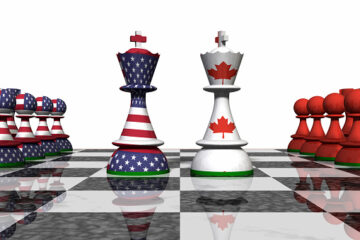If you have a spare moment to look up from your beach read, pool float or cabana drink this summer, it might be a wise idea to crack open your browser and take a look at the ongoing deals.
Savings and promotional events used to be a thing for the holidays; shoppers would rush in after Thanksgiving for the best chance at nabbing a television or pair of sneakers for a fraction of the typical retail price.
Related: Peloton struggling with a quietly growing issue
But nowadays the deals are coming earlier. Amazon (AMZN) first began running its now-famous Prime Day event in 2015. The event started as a way to celebrate its 20th year anniversary and originally ran for just 24 hours.
But the sales event was such a hit, Amazon couldn’t help but do what successful retailers do best: expand, iterate and expand some more. Prime Days (which still runs only for a limited 48 hours) now features events like concerts and live streams in addition to the countless items that are put on sale.
The event generates so much attention (and revenue) that it’s now considered one of the most important events in the retail calendar. But not just for Amazon and Prime members.
A computer screen showing the Amazon Prime event storefront.
Amazon Prime Days breed competition
Amazon generated a record $12.7 billion in sales from its July Prime Days event in 2023, according to Adobe. Amazon for its part claims it helped customers save $2.5 billion via its deals and promotions that day. It also says its home, fashion and beauty segments were its most successful, with the following products its top-sellers:
Fire TV StickLaneige Lip Glowy BalmApple AirPodsBissell Little Green Portable Deep Cleaner
With so much money potentially on the table, it’s easy to understand why other retailers might want to get in on the trend.
Both Target (TGT) and Walmart (WMT) hosted their own versions of Prime Day, called Circle Week and Walmart+ Week respectively, in 2023. Both retailers’ events lasted a bit longer than Prime Days, with deals coming and going for about seven days, as opposed to Amazon’s two.
Related: Walmart’s special deals take aim at Amazon Prime Days
Walmart has already kicked off Walmart+ Week, running its now-recurring summertime event from June 17 to June 23. Walmart has not commented on how successful its week of deals was, though Walmart U.S. Chief Executive John Furner told analysts on a May earnings call that the promotion was a high priority for the retailer.
More Walmart:
Walmart raises the price of a key serviceWalmart launches cheap brand customers will loveSome Walmarts make surprising self-checkout change
“We think it’s a great solution for customers, and it’s been exciting to see the progress,” he said.
Target gets in on summertime sales
It’s getting increasingly popular for Amazon’s competition to run their own promotional events before Prime Days. And it makes sense. It’s an effort to capture some of that consumer excitement for summertime sales before Amazon even gets around to posting its own merchandise for sale.
Target said on Tuesday that it would run its Target Circle Week just a few days before Prime Days, from July 7-13.
Amazon Prime Days will run July 16-17.
Related: Amazon makes a major Prime Day announcement
Target’s deals will begin at 3 a.m. EDT on July 7 and feature the following promotions:
Up to 50% off select toysUp to 40% off select kitchen and home30% off select clothing30% off select bedding and bath20% off select skincareBuy one, get one 50% off food and beverage summer favoritesSpend $50 on home care products and receive a $15 Target GiftCardSpend $40 on select products at Ulta Beauty at Target and receive a $10 Target GiftCard
These discounts are available to Target Circle members, which is a free tier of the retailer’s loyalty program. Members of Target Circle 360, which costs $49 a year and functions similarly to an Amazon Prime membership, are afforded bigger perks, including same-day delivery via Target’s Shipt service.
Related: Veteran fund manager picks favorite stocks for 2024


